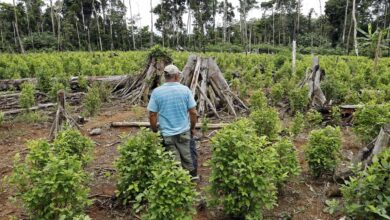Which Drug Policies Do Consumer Countries Have?
Anti-drug policy in the countries that consume the most has evolved and seems to be heading towards decriminalization, public health, and the exploitation of new markets around drugs.

The White House Office of National Drug Control Policy released its annual report on the cultivation and production of coca in Colombia, Peru and Bolivia. Photo: Reuters
LatinAmerican Post | Gregory Ahumada
Listen to this article
Leer en español: ¿Cómo están los países consumidores en política de drogas?
The White House Office of National Drug Control Policy released its annual report on the cultivation and production of coca in Colombia, Peru, and Bolivia. The situation is worrying since the hectares cultivated in the first two increased. In Colombia, it increased by 15% to 245,000 cultivated hectares, while in Peru there are currently 88,200 hectares. Bolivia, on the other hand, presented a slight decrease. Finally, in terms of potential production, the 3 countries registered an increase. This leads us to consider not only the strategies that the producing countries have been carrying out but also how the dynamics have been in the countries that consume the most.
En el 2020 aumentaron los cultivos de coca en Colombia, eso quiere decir que nuevamente fracasó la política antidrogas de @IvanDuque, desde @ascsucor_org hemos insistido que la única solución es la implementación del #PNIS, contemplada en el Acuerdo de Paz! pic.twitter.com/XvOqfI5RpH
— Jose David Ortega (@JoseOrtegaRuiz) June 26, 2021
There is the idea that the producers are the ones to blame because of the increase in the consume. But what is the role of the other countries? Aren't they as guilty or even more than the others?
¿Qué dice? Hay un compromiso de más de USD$ 465.000.000 para Colombia.
En orden de importancia en el doc aparece PRIMERO acciones contra narcóticos y señala que el Gobierno se debe comprometer con una reducción de 50% la producción de coca y cultivos de hoja de coca 2/n
— Michael Weintraub (@miweintraub83) July 1, 2021
In the first place, the United States has always been the leader in the fight against drugs. The conservative approach of the nation has always criminalized the use of any drug and it has just resulted in an increase in violence. However, in recent years there has been progressing towards the legalization of marijuana in some of its states. On the other hand, neighboring Canada became the second country in the world to legalize the recreational use of marijuana and is on its way to becoming a powerhouse in the trade of cannabis-based products.
Also read: Colombia: how do you try to regulate cocaine?
On the other hand, we have Australia and New Zealand with a high percentage of the consumer population. These countries have tried to reduce the supply of drugs in their territories but have also applied a public health approach. Some Australian states have established cannabis decriminalization models and mechanisms for consumers to receive medical assistance. For its part, New Zealand initiated a pilot program based on criminal justice but leaving the door open to the legal market for recreational drugs so that manufacturers can create and distribute these products under controlled conditions.
Decriminalisation and treatment helped cut Portugal’s overdose rate to one of the lowest in Europe https://t.co/rINLnQAGkQ
— The Economist (@TheEconomist) December 5, 2018
Another relevant case is that of the Netherlands. In general terms drugs are prohibited there, however, they have designed a drug policy with strict conditions that allow the use of cannabis. Here "Coffee shops" have been created; places where the sale of drugs is allowed, under controlled conditions and with serious restrictions for people.
Something similar has been happening in Israel, one of the countries with the highest percentage of marijuana users. In recent years, the use of marijuana has been decriminalized and it has even been positioning itself as a powerhouse in medical cannabis research. Here there has also been a boom in cannabis consumption coffee shops with limited conditions. (Emergui, 2021)
Change is coming ????????????
Support not punish
https://t.co/yTsCJJRInf— Jason Kew (@jqjasonkew) June 30, 2021
As we have seen, developed countries are gradually opting to decriminalize the use of soft drugs. Likewise, special importance is being given to medicinal uses and a public health approach has been given to the problem. However, we will have to wait for what will happen to stronger drugs such as cocaine, whose illegal production is still massive. However, President Joe Biden has promised to shift the historic approach to the fight against drugs towards a less punitive approach, which is sure to have serious repercussions in producing and consuming countries.




